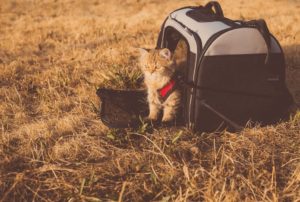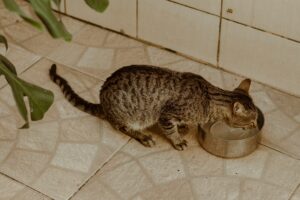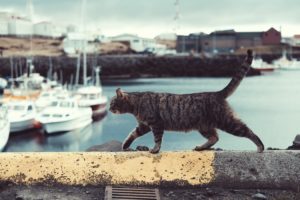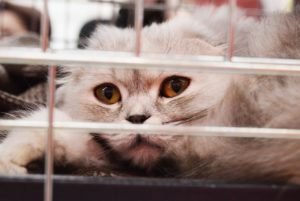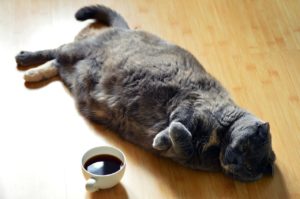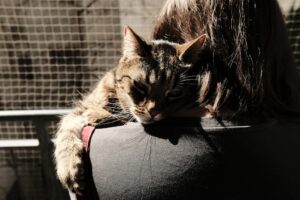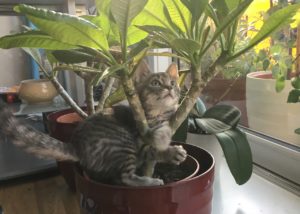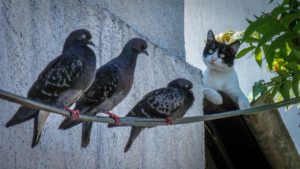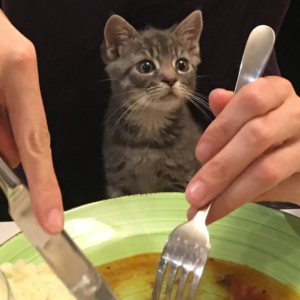 Feeding a cat is the most basic task required for taking care of your furry friend. However, there are plenty of problems that can arise. Many owners worry about the nutritional value of their cat’s food, or if the food is right for their cat’s lifestyle. There are also foods that cats like to eat, but should be avoided. Deciding which food to give your cat, how often, and where can be a minefield.
Feeding a cat is the most basic task required for taking care of your furry friend. However, there are plenty of problems that can arise. Many owners worry about the nutritional value of their cat’s food, or if the food is right for their cat’s lifestyle. There are also foods that cats like to eat, but should be avoided. Deciding which food to give your cat, how often, and where can be a minefield.
A lot of potential health problems are caused by a cat’s diet. There aren’t hard rules where it comes to these sorts of choices, but there are some clear guidelines that you can keep in mind. While all cats are different, there are some definite dos and don’ts to keep your cat happy and healthy.
Wet Food or Dry?
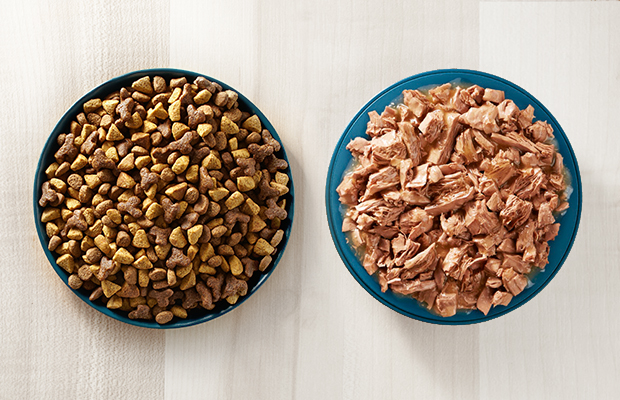
Cat Food comes in two types, wet and dry. Three if you include whatever wildlife they might manage to hunt, but let’s assume that your cat’s predatory behaviour is relatively controlled. Wet food might smell worse, but it does have quite a few health benefits. It is around 75% water, which is similar to the composition of prey that they would eat in the wild. This makes wet food closer to the diet that your cat is biologically suited to. A lack of water can cause serious problems, like kidney disease.
Most brands of wet food are considerably lower-carb than dry food. Your cat is naturally a hunter. Because of this, carbohydrates are a lot harder for your cat to digest than protein. A diet with too many carbs can greatly increase the risk of obesity and diabetes.
Cats are naturally inclined to eat a few small meals a day, this is difficult with wet food as it spoils so quickly once opened. It’s also messier, and harder to measure. Some cats even prefer the taste of dry food, so you might be tempted to feed them exclusively on dry. Dry food might help to keep your cat’s teeth in good condition, although this is currently disputed. The jury is still out on the dental benefits of dry food, so if your cat has a dental problem then it’s best to consult your vet first.
Wet food is the better choice for main meals. This can be mixed with dry food when you’re out of the house, or when convenience has to take precedent. Much like our own diet, a balance is key.
Complimentary Food or Complete?
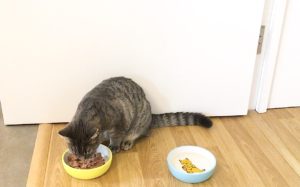
Manufacturers are legally obligated to label their cat food as complimentary or complete. This is to give you the full picture of what you’re buying. Some cat owners might be unaware of the difference, but it’s important for your cat’s health.
Complete food contains all of the nutrients that your cat needs each day. Like Soylent, this food is formulated to meet your cat’s every need. However, a lot of cats will have different requirements. The legally classified complete diet isn’t perfect for every specific cat. While it may say complete, it’s best to view this as a guideline. If your cat has any specific dietary needs, such as their age or their activity level, then you need to make sure you’re keeping this in mind when selecting food for them.
Complimentary food is specifically designed to only be a portion of what your cat needs. Even if your cat loves the taste, it might not be good for them. This food is often less processed than their complete counterparts because a perfect diet is hard to find in the wild. Complimentary food has to be balanced with other food to give them a healthy diet. It should be used as a treat. A reward for your cat, not for every meal. Feeding a cat on nothing but complementary food might make them happy, but it won’t make them healthy.
Feeding Kittens, Ingredients, and Vitamins

Kitten branded dry food is marketed, but it’s best to feed kittens on wet food until their teeth fully develop. It might be tempting to wet the dry food as you would for a puppy, but you shouldn’t do this. Cats prefer to naturally bite down on crunchy food. A mixture of Kitten specific dry and wet can be used once their teeth develop, before weaning onto adult food.
You should consult the ingredients of whichever brand of food you buy, particularly with dry food. The diet that cats eat in the wild doesn’t include grains. Their bodies have no need for it. It’s filler in dry food, it helps with the consistency and makes it cheap to produce. You should avoid grain-based cat food. Even reputable brands use ingredients with a bad reputation, quickly checking the ingredients as you would with your own food will save a lot of hassle.
You can supplement complementary food by adding vitamins. These supplements work similarly to those designed for people. They are effective. However, the best way for your cat to get the vitamins they need is eating food that already contains them. A cat with a good diet shouldn’t need additional vitamins unless it has a specific health problem, in which case you should always follow your vet’s instructions for adding vitamins. They can be helpful for when you want to treat your cat with complimentary food but don’t want to sacrifice any health benefits. They shouldn’t be used as a replacement for a good diet.
Food and Water Bowls
There’s a lot of choice on the market for food and water bowls, some are more practical than others. Simple plastic bowls are cost-effective, but they’ll spoil quicker than their natural counterparts. This means you’ll end up spending more in the long run.
Say no to plastic
Plastic bowls are also poor for hygiene. They have a tendency to scratch and degenerate easily. These little nooks are perfect for harmful bacteria to breed. Some cats can even develop an allergy to the plastic, this makes plastic unsuitable. A metal bowl is better than plastic but also has its downsides. Stainless steel is the best material for a metal bowl, which can get expensive. You’re also quite limited with aesthetic choice.
Choose quality material
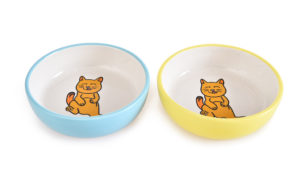
The best solution is a ceramic bowl. They are made from natural materials and are much safer against growing bacteria. They’re also a lot nicer looking than metal or plastic with plenty of designs to suit your taste. Ceramic bowls are the longest lasting options, giving you the best value when setting up a home for your cat. As with most things, the more natural option is the best.
Don’t put food and water bowls too close to each other
Water and food bowls should not be touching. This can lead to cross-contamination. Cats won’t drink enough from a messy bowl. Their water will need changing regularly. A good benchmark is to change it whenever you give your cat fresh food. Replacing water after they’ve eaten will reduce the chance of the water getting messy. Bowls should be washed every two or three days to keep them hygienic. If you’re using a particularly messy wet food you will have to wash them more often.
Automatic Food Dispensers, Toys, and Convenience
Your cat’s diet shouldn’t suffer because it’s more convenient. Remember that you have an obligation towards their health and wellbeing, that starts with proper feeding and access to water. Sometimes you have to plan ahead if your schedule isn’t going to line up with meal-times.
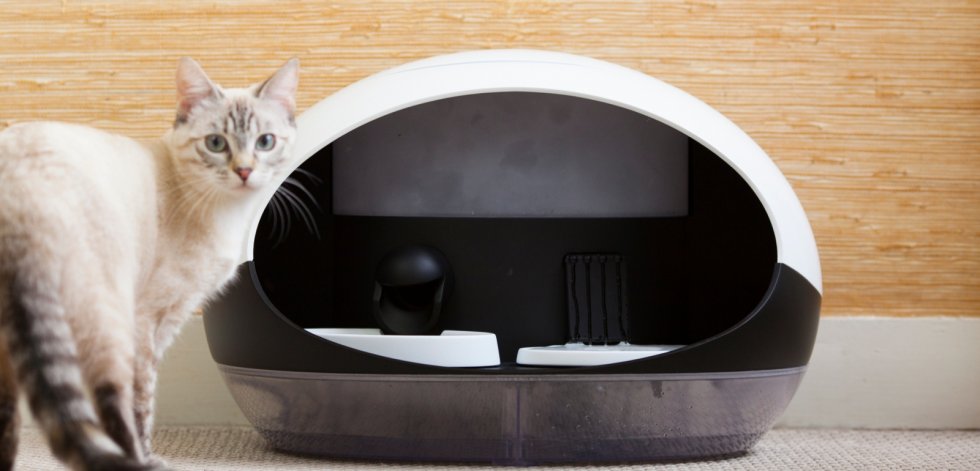
Automatic feeders can be a great solution. Otherwise, it can be tempting to leave out extra dry food which can lead to overeating. An automated feeder can solve this problem. While they can be a little pricey, they are a good long term solution. Remember to check the instructions for how often to clean the feeder. Otherwise, it might become an automated germ dispenser.
Toys that release dry food as a cat plays will help them stay entertained and fed, which can be a concern for indoor cats. This will work while you’re not around, but a toy that feeds dry food shouldn’t be used for every meal. Dry food from a toy to keep them active followed by wet food at a different time is a good balance for an indoor cat.
The Ideal Portion to Feed Your Cat
Most brands of cat food have different compositions; this means each has a different ideal portion. You can find these guides on the website of the manufacturer of your food. These numbers will vary depending on the size of your cat. You should take this recommendation as a guideline. If your cat is overeating and gaining weight from this amount, then you need to feed them less or switch to food designed for your cat’s lifestyle. Likewise, if your cat is clearly not being eating enough then you should increase the amount that you give them.
Within a few weeks of trial and error, you should have a portion and schedule that works for you and your cat. Remember to measure their weight regularly, so you can be sure you’re feeding them the correct amount.
A cat’s health is entirely dependent on a balanced diet. If you’re feeding them the right food, in the right amounts, and in the right bowls, then your cat will be healthy and happy. Are you feeding your cat the best possible diet?

